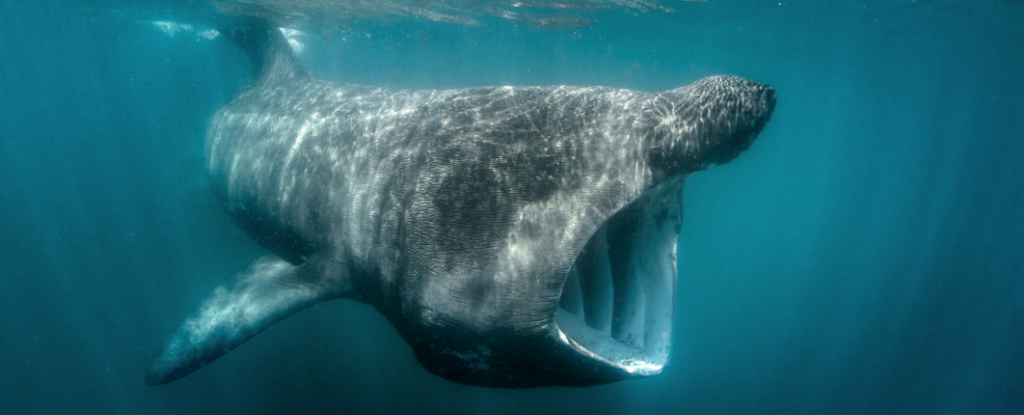Products You May Like
Scientists have discovered an exceptional case of a partially warm-blooded fish, fundamentally changing our understanding of fish physiology.
The fact that basking sharks (Cetorhinus maximus) show elevated body temperatures while swimming is like “finding that cows have wings,” says marine biologist Nicholas Payne from Trinity College in Dublin, Ireland.
Of all the shark and fish species alive in Earth’s oceans today, about 99.9 percent are thought to be cold-blooded.
Only about 50 years ago did experts realize that some shark and tuna species, like the great white shark or bluefin tuna, are not as cold as the water they swim in.
Some parts of these fish are warmer than the surrounding ocean, meaning they are not fully ectothermic, or cold-blooded. Instead, they are deemed ‘regionally endothermic’, or warm-blooded.
Because virtually all these fish are apex predators, scientists once assumed that their novel circulatory system somehow secured their position at the top of the ocean’s food chain.
But that may not be the case after all.
A new study on the slow-moving basking shark suggests regional endothermy does not only appear in apex predators.
It can also show up in large, passive-feeders, too.
When Payne and his colleagues tagged wild basking sharks with electronic biologgers, the international team of researchers measured higher subcutaneous tissue temperatures than expected.
The recorded temperatures resembled other regional endotherms, like the great white.
“[U]ntil now, we thought regional endothermy was only found in apex predatory species living at high positions in the marine food web,” explains Payne.
“Now we have found a species that grazes on tiny plankton but also shares those rather uncommon regional endotherm features, so we might have to adjust our assumptions about the advantages of such physiological innovations for these animals.”
When researchers dissected two dead basking sharks, they noticed an unusual amount of compact muscle around their hearts.
This suggests that basking sharks can maintain higher blood pressure and blood flow than most other fish, facilitating warmer muscles and possibly allowing them to migrate and feed more efficiently in colder waters.
But this physiology probably didn’t evolve to hunt fast-moving prey. Nor is it necessarily due to the shark’s enormous body size, which can reach up to 12 meters long.
After all, the cold-blooded whale shark can grow up to 10 meters long, and yet it has fewer than 15 times the percentage of compact heart muscle as a basking shark.
So why is the basking shark so exceptionally warm?
Despite moving sluggishly a lot of the time, basking sharks are sometimes known to speed up significantly when feeding.
Why they do this when their prey is so slow is a mystery, but it could have to do with overcoming drag, thereby “preserving feeding efficiency” in cooler water.
Previous studies have also found that regionally warm-blooded fish can swim 1.6 times faster than their cold-blooded counterparts – providing a possible evolutionary advantage to the unique circulatory system.
“The basking shark is a shining example of how little we know about shark species in general,” says zoologist Haley Dolton from Trinity.
“That we still have lots to uncover about the second biggest fish in the world—such a huge, charismatic animal that most people would recognize it—just highlights the challenge facing researchers to gather what they can about species to aid in effective conservation strategies.”
The study was published in Endangered Species Research.
